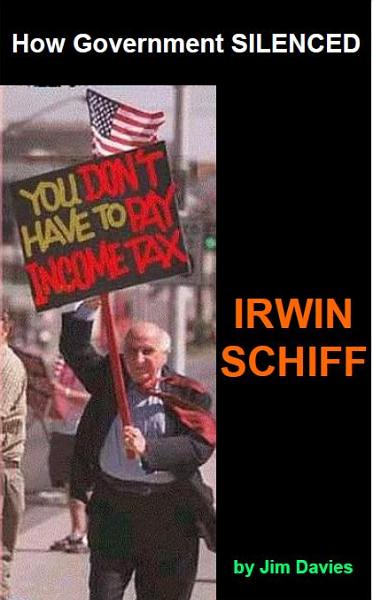
|
18A052 Fun with the GDP by Jim Davies, 12/25/2018
It's a false measure, but it's the only one we have; and it's a bit useful when comparing how well different countries are doing relative to one another. Let's try to imagine how its value will change after E-Day. Gross Domestic Product is the sum of all economic activity in the land. How anyone can count it at all accurately, I don't know, but again, it's all we have; for the US currently it's $20.8 trillion, almost enough to pay off the FedGov's debt if everyone could live on air for a year and a bit... and wanted to help out. It includes spending by government as well as sales by productive folk, and the former is said (same source, the "Debt Clock") to be $7.2 trillion, or 34.6%. I think that's quite a lot too low - that it's closer to 50% - but will leave that for now. That 34.6% brings on its own a heap of trouble. What government spends can be divided into two categories: (a) things which in the coming zero government society will disappear, for they will attract no demand in the market; for example, the military. Then (b) things for which there will be a market demand (eg, roads) but which a free, competitive market will offer at prices much lower than they presently cost. How can we estimate (a) and (b)? Not easily! - so I'm going to leave the job to you. I'll show below some numbers with suggested values, but if you don't like them, insert your own - just use the model. How big is (a)? - I have the feel that at least a quarter of everything government does is a total waste. It may be much larger than a quarter, but being as it's Christmas I'll be kind to our adversaries. In that case, (7.2 / 4 =) $1.8 trillion will vanish from the GDP. (b) is trickier but I recall an old study by the Reason Foundation which got called the "Bureaucratic Rule of Two" because when comparing the cost of any function that was liberated from the government's grip and returned to the market, competitive pressures reduced its cost by 50% - and vice versa. Perhaps it's more today, or possibly a bit less. Certainly, it will vary a lot according to the function. But allow for now that Type (b) activities will, when the market performs them, fall in cost by half. Then another ((7.2 - 1.8) / 2 =) $2.7 trillion will fall off the GDP. Finally there's the portion that's operated today by the semi-free market; how will that change? I think it's smaller than the Debt Clock source shows, but to be consistent it would now be (20.8 - 7.2 =) $13.1 trillion, and it labors under the burden of a load of government regulations so heavy that nobody can read them all. Surely its cost, in the ZGS, will be much lower? Of course it will. How much more is hard to guess, but the reduction can hardly be less than 30%, so I'm going to suggest the slashing of a further (13.1 x 0.3 =) $3.9 trillion from the GDP. So far, then, the total cut is 1.8 + 2.7 + 3.9 or a total of $8.4 trillion, which comes to (8.4 / 20.8 =) 40.4%. Round that to a 40% reduction in GDP. Now, there's a surprise! When government vanishes, the society's production will fall by 40%? What's going on? First, that 40% represents a waste. It's included in the GD "Product" today because government bean-counters put it there, but it's not actually a useful product at all. Given a choice, nobody would buy it. And in the ZGS, nobody will. So the 40% cut is a correction, the removal of an error. Second, the people who worked all day to produce that waste will be liberated for productive work in the market; they won't be capable of doing it at once (which is why, initially, the GDP will fall) but after re-orienting themselves to the reality of self-reliance, they will produce. If they do so at an average rate, the first result will be a jump in the true (corrected) GDP of ((8.4 / (20.8 - 8.4)) = ) 67.7%. So, after a short period for that re-training, prosperity in the ZGS will leap by two thirds! Happier, now? We're not yet done, by any means. The removal of the vast burden of regulations on the back of free enterprise will go on yielding benefit; the economy will grow. After 1980 in China, when markets were allowed to operate, the growth rate for a couple of decades at least was 9% a year. The coming ZGS will be vastly more free than China is today, so I predict a real growth rate of at least 9% a year, in addition to the one-time 67% boost just described. An annual 9% rate doubles in eight years. We're looking at doubling our living standards every 8 years! I think the figures I assumed above are conservative, but perhaps you disagree. So go ahead, plug in your own. You'll still conclude that the evaporation of all government will bring about an enormous increase in wealth. Here's wishing you a happy and prosperous New Year. A closing thought: above, I've been using US dollars as the measure. That will not actually happen. As E-Day approaches the dollar will lose its value, until on that day it will reach zero. The GDP will not be $20.8T, it will be infinite, and a 40% reduction in infinity is still infinity. All those figures will be meaningless. In its place will be a form (or forms) of money the market chooses, most likely including gold. If it were all gold, then at today's exchange rate of $40,000 per kilogram or $40 million per tonne, a $20.8T GDP would equate to 520,000 tonnes of gold, which is about four times the weight of it so far mined in all history worldwide. That's one way to express the utter ruin brought about by the institution of government, and/or the grotesque present under-valuation of gold.
|
|
||||||||||||||||||||||||||||||||||||||||||










